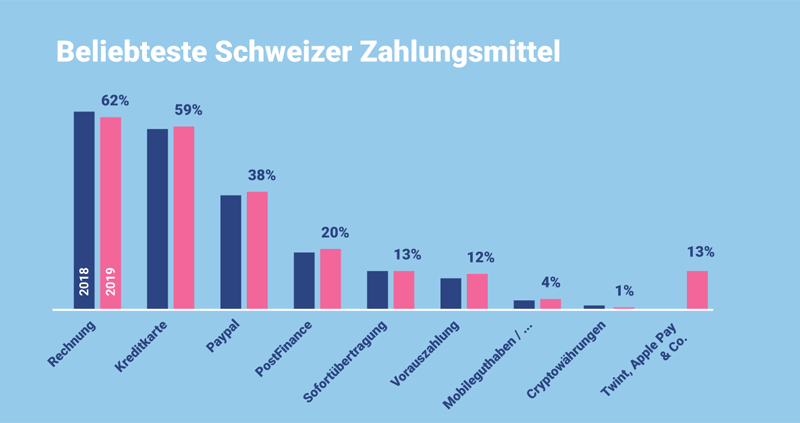
eCommerce systems: These factors must be considered to be successful in online trading
The growing eCommerce market offers interesting opportunities for SMEs and entrepreneurs. But how does eCommerce actually work? Which eCommerce systems are suitable? What payment options do I need, and how do I find customers for my online shop?
What is eCommerce? (Definition)
The term eCommerce, short for electronic commerce, describes all online commerce, including the buying and selling of goods. ECommerce includes not only online shopping, but also other areas of online business, such as online banking or customer service. In general, however, the term eCommerce is primarily used in everyday language to refer to online shopping.
Online shop or marketplace model
eCommerce is often equated with selling products through one’s own online store. But there is also the so-called marketplace model: For companies that don’t want to deal with online shops, marketplaces like Ricardo, eBay, or Amazon can be a good alternative. Numerous retailers offer their goods there, and the platforms take care of the smooth running of the business. If you want to enter eCommerce as a company, you should consider whether to create your own online store or sell your goods through a marketplace.
Your own store: With your own online store, you are considerably more flexible, but you have to invest a certain amount of time and money into setting up the store.
The advantage: You are and remain your own boss and control the entire process. Furthermore, you don’t pay any fees to third parties.
Marketplace: When selling through a marketplace like Ricardo, Amazon, or eBay, you can benefit from their huge customer base. However, marketplace operators earn money from every product sold and make key decisions about the terms and conditions under which sales are permitted.
Since both models have advantages, it is recommended in the long term to work with a combination of your own online shop and sales via marketplaces. You can undoubtedly find customers more quickly on established marketplaces, but in the long run, you’ll keep the most money in your own shop. It usually takes a while to establish an online shop, whereas you can get started immediately on marketplaces – provided you have a product that people are looking for and buying.
eCommerce to support brick-and-mortar retail
Brick-and-mortar retail has suffered from e-commerce for many years. At first, e-commerce was ridiculed as a short-term trend, then cursed by retailers due to its growing market share. Now, a rethink is taking place in brick-and-mortar retail: Under the technical term “multichannel,” traditional retailers are no longer limited to brick-and-mortar stores, but also online.
Retailers here rely on various forms of multichannel sales. Some operate a dual-track approach, offering their goods separately in terms of price and logistics – online and offline. However, it has now become clear that a close connection between e-commerce and brick-and-mortar retail is the most economically effective. This allows the advantages of traditional retail to be leveraged, for example, by offering postage-free pickup in the store for online orders. Customers can also be lured into the store through special offers they receive online.
eCommerce systems for success in online trading
1. Shop builder
If you want a simple online shop that you can easily create and operate yourself, a shop builder (such as MyCOMMERCE – see the demo shop here) might be a good option. Such eCommerce systems require no programming knowledge, are quick to set up, and are inexpensive. However, they lack comprehensive flexibility.
2. WordPress eCommerce plugin
If you already have a WordPress blog, you don’t have to start a completely new project; you can essentially “upgrade” your blog – using WordPress plugins, you can easily integrate a shop. This is a good compromise, as the shop is then integrated into your own website. MyCOMMERCE also offers easy integration via a plugin.
3. 100% personalised shop software
If you want to sell a large number of products, connect to a professional ERP system, and build a solution that’s tailored precisely to your company, then professional shop software (such as Magento) is essential. This software can be completely customized in terms of design, and individual functions can be added. However, setting up such a shop requires an external agency to handle all the technical aspects. The agency is also needed to further develop the shop or to make minor adjustments. These solutions are typically used by large companies.
Online payment methods in eCommerce
According to various studies, choosing the right payment method is one of the key success factors in eCommerce: If the user’s preferred payment method isn’t offered, the purchase is often canceled. But which are the most popular online payment methods in Switzerland? According to a study by PostFinance, the following has changed with payment systems:
Invoice and credit card are by far the most popular. Other methods such as prepayment or Twint play a lesser role. Learn how you can offer these payment methods in our article here.
Marketing in eCommerce
An online shop alone is no longer enough to generate significant revenue. Without targeted marketing measures, few users will find you. The solution: marketing. The key online marketing measures are:
- Search Engine Marketing (SEM): Search Engine Optimization (SEO) for unpaid search results, Search Engine Advertising (SEA) for paid results
- Email Marketing
- Social Media Marketing
- Learn more here: “Guide – Marketing for Beginners“
Advantages and disadvantages of online trading for companies and customers
eCommerce systems and online shopping offer numerous advantages to both companies and customers:
- Speed: Purchase processes can be completed and processed without delay; the product arrives very promptly.
- Customers can order around the clock and are not tied to store opening hours.
- Convenience: Customers can browse online catalogs, browse stores, select the desired product, and pay for it from home.
- Overcoming geographical distances.
- Better price and product comparison options.
- High efficiency: Online shopping not only speeds up sales processes but also minimizes personnel costs.
Disadvantages in eCommerce:
- Implementation effort
- Advertising effort and costs
- Payment and data security are complex to implement
- High competition and price pressure
- No personal customer contact, lack of personal advice
Conclusion: eCommerce systems
As you can see, creating a professional online store is more than just downloading a shop system and uploading a few images. The processes and effort behind the scenes can be complex. But with solutions like MyCOMMERCE, specifically tailored to the needs of SMEs, you too can get started without a hitch.
You can find more information about creating an online shop here.
